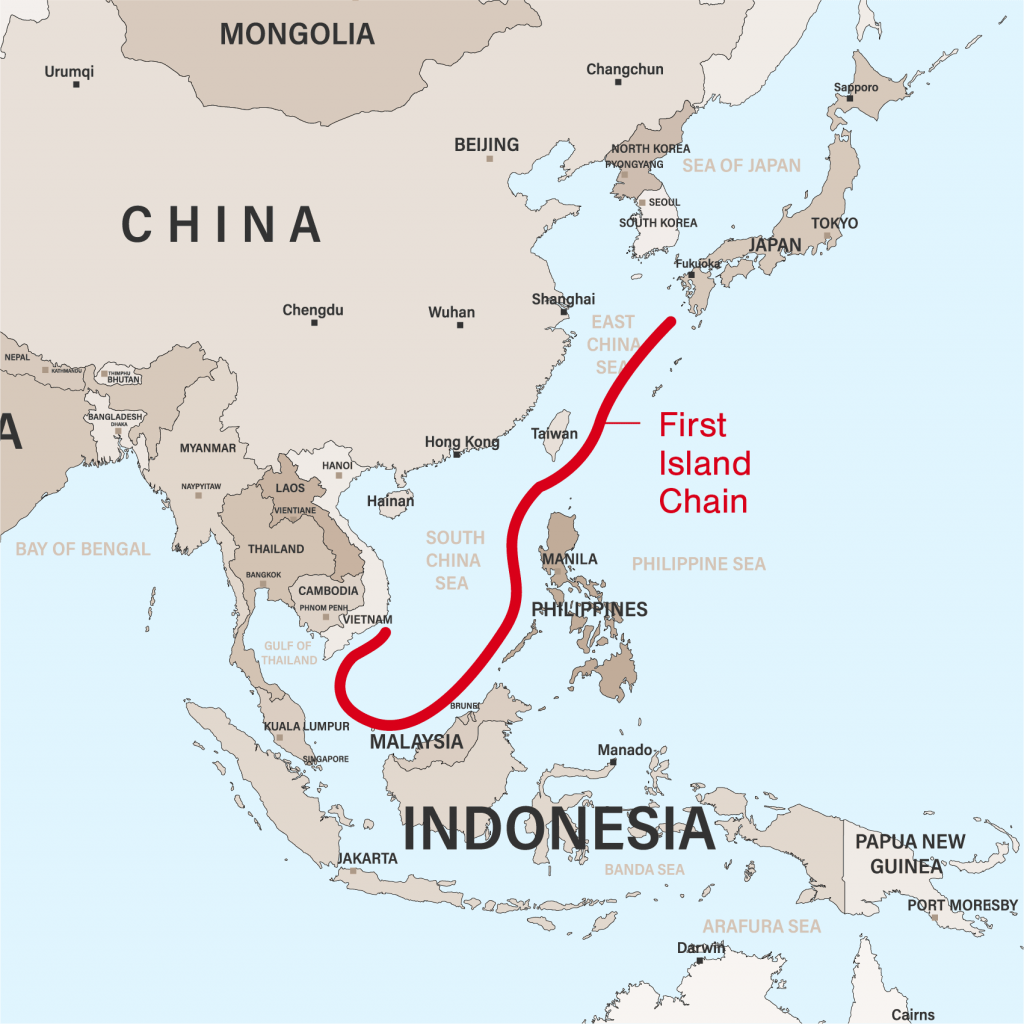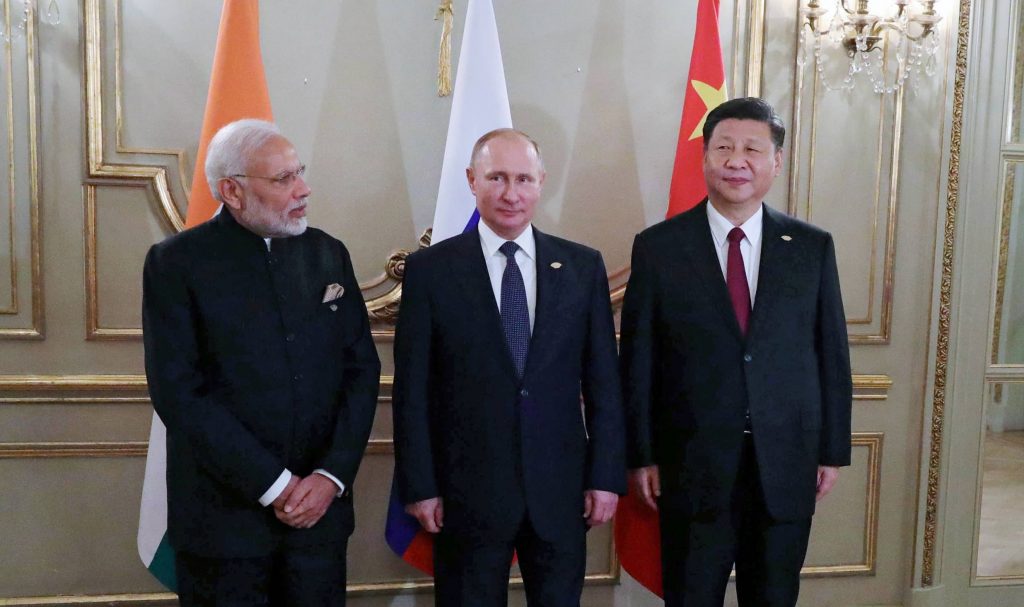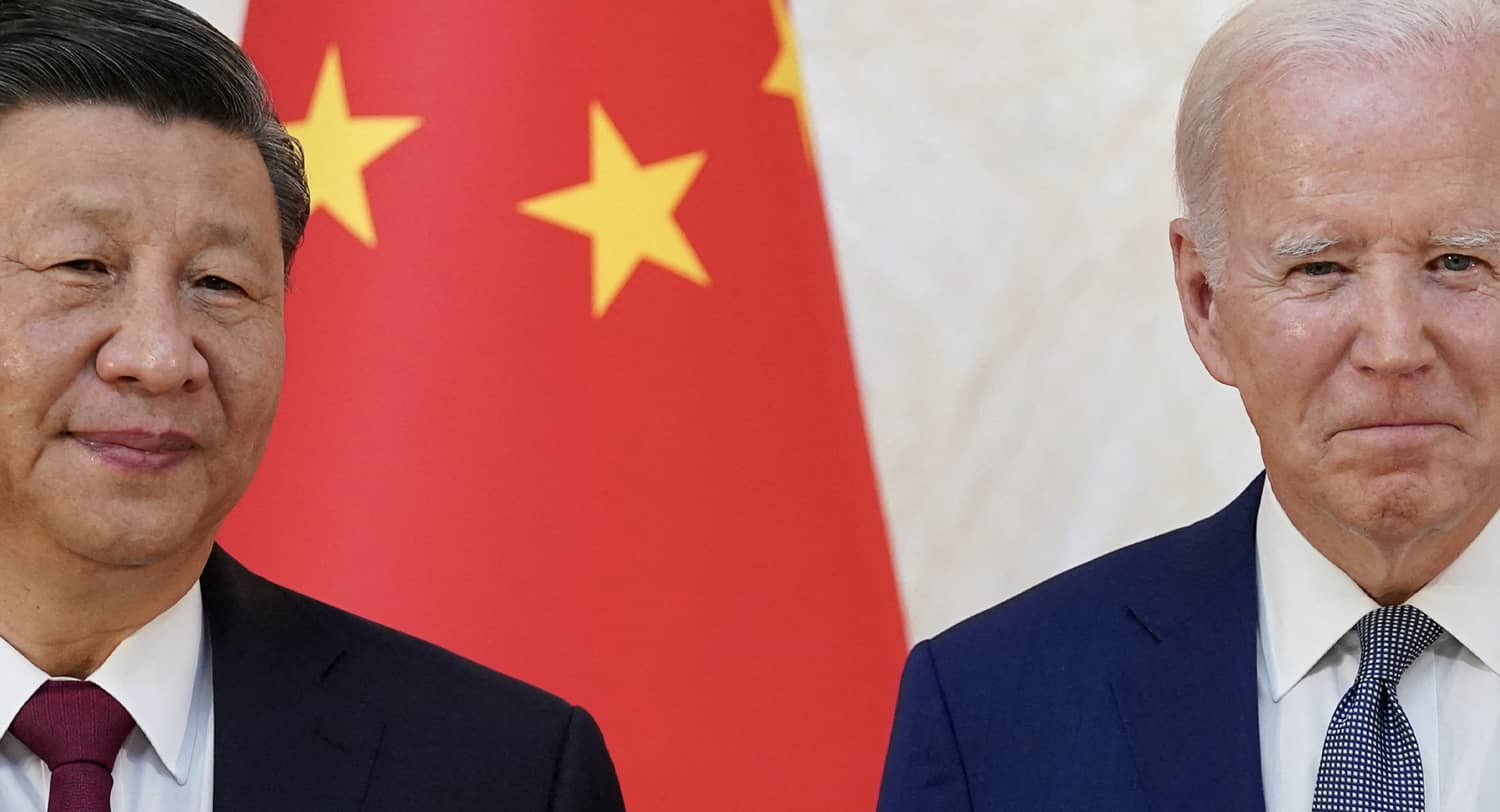The strategic complexion of Asia has shifted substantially in recent years. The United States is no longer the predominant military, diplomatic, and economic power across the region, as it was for the last half of the 20th century and the first decade of this century. China actively contests American leadership as it strives to restore what it views as its natural place as the leading power in the region.
China’s Reach for Leadership Based on Economic Ascent
China’s pursuit of leadership in Asia has become more visible as US-China relations have deteriorated. Beijing has shown greater tolerance for friction with the United States and other countries across the region in pursuit of its objectives. This has been apparent in China’s unabashed militarization of its artificial islands in the South China Sea, its punitive measures against South Korea following Seoul’s installation of a Theater High Altitude Area Defense (THAAD) system, Beijing’s punishments of Australia following Canberra’s calls for an investigation into the origins of COVID-19, and China’s ratcheting up of pressure on Taiwan throughout the presidency of Tsai Ing-wen, just to cite a few examples. Notably, Chinese and Indian forces also clashed at the Sino-Indian border, drawing casualties from both sides for the first time in decades.
At the same time, Beijing has enhanced its offerings to countries throughout the region. Chinese leaders have worked to fill the vacuum created by America’s abandonment of its traditional leadership role in promoting regional economic integration. In the years since President Trump unilaterally withdrew America from the Trans-Pacific Partnership, China has helped push across the finish line the Regional Comprehensive Economic Partnership, an agreement that covers nearly 30% of the world population and a similar share of global GDP. China also has signaled its desire to join the Comprehensive and Progressive Trans-Pacific Partnership as well as the Digital Economy Partnership Agreement. Even as China’s path to entry into these new groupings is far from assured, Beijing has used its signal of interest to sharpen its contrast with Washington, which has shown disinterest in these regional integration initiatives.
China also has sought to position itself as a solutions-provider to regional challenges. For example, through its sprawling Belt and Road Initiative, China has sought to present itself to the region as invested in reducing poverty and unlocking opportunities for growth.
China similarly has sought to position itself as the region’s indispensable economic partner. China’s overall trade with ASEAN countries by value has grown by a factor of nearly 30 over the past two decades, from $27.3 billion in 2000 to $771.7 billion by 2022. China and the 10-country bloc in Southeast Asia, the Association for Southeast Asian Nations (ASEAN), now are each other’s top trading partners. Both China and ASEAN trade more with each other than they do with the United States.
President Xi Jinping presents China as a key contributor for the region on infectious disease control and public health. He similarly has touted China’s contributions to the region’s clean energy transformation and climate change mitigation and adaptation efforts.
In other words, China in the past decade has made clear it is no longer content merely to protect its “core interests” on issues of sovereignty, political stability, and economic development in the region. It also is uninterested in a subordinate role to the United States in Asia. Instead, China is employing both coercion and inducements to reshape the region to better accommodate Chinese leadership.
There is evidence that China’s efforts have yielded results, most notably in Southeast Asia. As Joshua Kurlantzick of the Council on Foreign Relations recently noted:
The Lowy Institute’s report, titled, “Asia Power Snapshot: China and the United States in Southeast Asia,” used a variety of indicators to rank the two countries’ regional influence across four categories: economic relationships, defense networks, diplomatic influence and cultural influence. It concludes that the U.S. “has lost influence to China in Southeast Asia over the past five years in all four.” Similarly, a recent study by the ISEAS Yusof-Ishak Institute in Singapore found that a majority of respondents in a poll found that China was now the most dominant economic and political-strategic power in Southeast Asia.
Beijing’s efforts appear to be driven by both offensive and defensive goals. Beijing likely judges that if it can dilute American presence and influence, it will have greater capacity to deal with its neighbors from a position of relative strength, thereby raising the costs and risks to any regional country of challenging Chinese interests.
Beijing also would like to secure greater freedom of movement in and out of the First Island Chain – a series of land features from Japan through Taiwan, the Philippines, and Indonesia. America’s strong influence across this chain of islands, and its military presence and alliances with Japan and the Philippines, feeds Beijing’s fears of encirclement along its maritime periphery.

The India Factor
Beijing’s fears of encirclement are exacerbated by America’s growing relationship with India, given India’s crucial geography. China is the world’s largest importer of oil. Roughly half of China’s fuel imports are from the Persian Gulf region. Of the world’s seven key choke points for oil transportation, three are in areas around the Indian Ocean. Hence, China is vulnerable to being cut off from its key oil suppliers at one of these choke points in the event of conflict or significant escalation of tensions with the United States or its partners. This vulnerability has concentrated Chinese strategic thinking on the need for improved capabilities to mitigate or break American and/or Indian efforts to interdict trade bound for China. Such efforts have driven China’s development of new naval capabilities, as well as its efforts to secure access to ports and to improve relationships with countries in the Indian Ocean region.
Notably, however, China’s relations with India have deteriorated alongside its efforts to harden itself against risk of having its key sea lines of communication severed. While the decline in relations between Beijing and New Delhi is owed significantly to violence along their shared border, it also has been fueled by deepening mistrust and wariness of each other’s strategic intentions.
In response, China has pursued closer relations with all of India’s neighbors, and with Russia, in its efforts to gain leverage for dealing with India. New Delhi similarly has become more energetic in support of the Asia Quad (Australia, India, Japan, the United States). Indian Prime Minister Modi also has deepened relations with advanced economies, including through the G-7. Modi also has maintained functional relations with Moscow and has not bowed to pressure from Europeans and Americans for him to shun Russia following its invasion of Ukraine.

Despite all these concerns, China has not evinced significant public anxiety about India’s moves to fortify its position. From Beijing’s vantage, China’s economy is five times larger than India’s, and China’s military spending is more than three times higher than India’s levels. Beijing also maintains multiple channels to manage tensions with New Delhi, including through the BRICS grouping, the Shanghai Cooperation Organization, and the annual China-India-Russia meetings format. I hear from Chinese counterparts that they expect India will remain self-interested and will not take on America’s fights with China. Rightly or wrongly, they seem to assume that India’s relatively weaker position and its material need to benefit from expanding trade with China will militate toward manageable levels of friction over time.
Historical and Geopolitical Limitations to China’s Reach
Alongside its growing economy, China clearly is engaging in a massive peacetime military build-up. Even so, there are powerful reasons not to overestimate China’s potential to dominate the region at America’s expense.
The first is history. As Steven Walt has shown, the record of previous powers who made a bid for regional hegemony is littered with failure. France’s efforts were repelled under Louis XIV and Napoleon Bonaparte. Germany suffered defeat in two world wars. Japan’s attempt to dominate Asia ended in absolute surrender. As keen observers of history, China’s leaders must grapple with the risks that a sprint for regional dominance would represent a cosmic roll of the dice with unpredictable outcomes and historically bad odds.
The second reason is that China faces arguably the most contested strategic geography of any major power in the world today. Beijing is surrounded by highly capable powers. Many of China’s neighbors are bolstering efforts to balance against China’s rise, including by increasing their defense budgets and intensifying coordination among themselves. The United States is encouraging such efforts and adding its own capabilities to the enterprise.
The third reason is that no other country in Asia aspires to return to a Sino-centric order. President Xi Jinping’s admonition that “it is for the people of Asia to run the affairs of Asia” is heard somewhat cynically. Many regional countries’ national identities are formed by their differentiation from the Chinese nation and their unwillingness to accommodate China’s regional designs. This includes Beijing’s insistence on acceptance of its territorial claims, whether in the South China Sea, East China Sea, Sino-Indian border, or over Taiwan. China does not own a monopoly on nationalism in Asia.
In other words, there likely will be limits to how far China will be able to expand its influence in Asia. This recognition should not invite complacency on the part of the United States and its partners.
Nevertheless, Beijing remains confident in the bet in favor of its long-term ascent. Although China’s leaders refer less often publicly to “time and momentum on China’s side,” China’s strategic community continues to posit that their relative position in Asia will strengthen alongside the country’s continued economic rise.
Even with declining rates of economic growth, China’s leaders still seem to expect China will contribute a large share to the region’s economic growth. They also expect China will remain a key source of demand for products and services from the region. Many value chains still run through China, and its growing middle class has become a key swing buyer for goods and services. China’s growth model also will drive demand for the region’s raw materials, intermediate goods, and services.
What Should Washington Do?
Washington and its partners will need to strengthen their military deterrent posture and enhance their competitive offering in Asia to ensure they can preserve a favorable balance of power and prevent China from dominating the region at their expense.
America’s and its partners’ efforts in this regard will be enhanced by a sense of calm confidence and comprehensive attentiveness to the region’s greatest challenges. Steady, sustainable efforts will have more impact over time than brief bursts of attentiveness followed by a reversion to neglect, which would trigger latent regional anxieties about America’s unreliability.
As the United States and its partners work to up their game, they would be wise to concentrate on investments that boost economic development, hasten the clean energy transition, support climate mitigation and adaptation, improve public health, and widen access to education.
While military power will continue to be important for informing perceptions in the region, the preferences of Asia’s young populations will also influence relations between the region and the major powers. The United States and its partners still have a winning hand to play but they need to embrace competition. Whichever country or group of countries delivers the best results and does the most to improve the lives of citizens in the region will enjoy the pull of power in the coming century.

